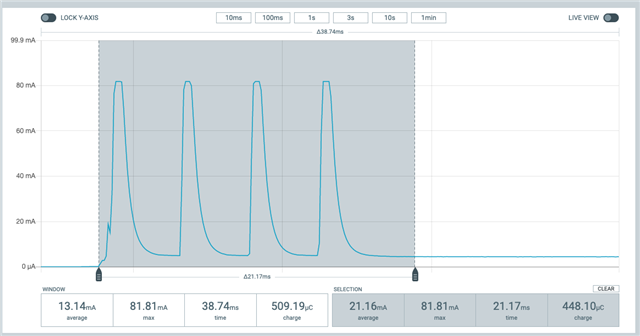Hello,
I’m designing a custom nrf52832 device and i came across an issue with energy buffering. I am using inside of the device the battery CR2032, SoC nrf52832 and two proximity sensors VCNL3040 ( https://www.vishay.com/docs/84917/vcnl3040.pdf ). Those sensors have pulse current up to 200mA for a few mili seconds (as you can see on attached image), but the battery is rated only for 0.2 mA load. The problem is, those hight current pulses cause capacity drop and voltage drop of the battery, and on the end also cause hard restart of the device. I was wondering, if you have some example design for energy buffering that would be suitable for my use case.
One more important thing is, the device is designed for long battery life, and most of the time is in sleep mode, therefore has the average power consumption of around 5 uA.

Thank you.
Best Regards,
Tomas


